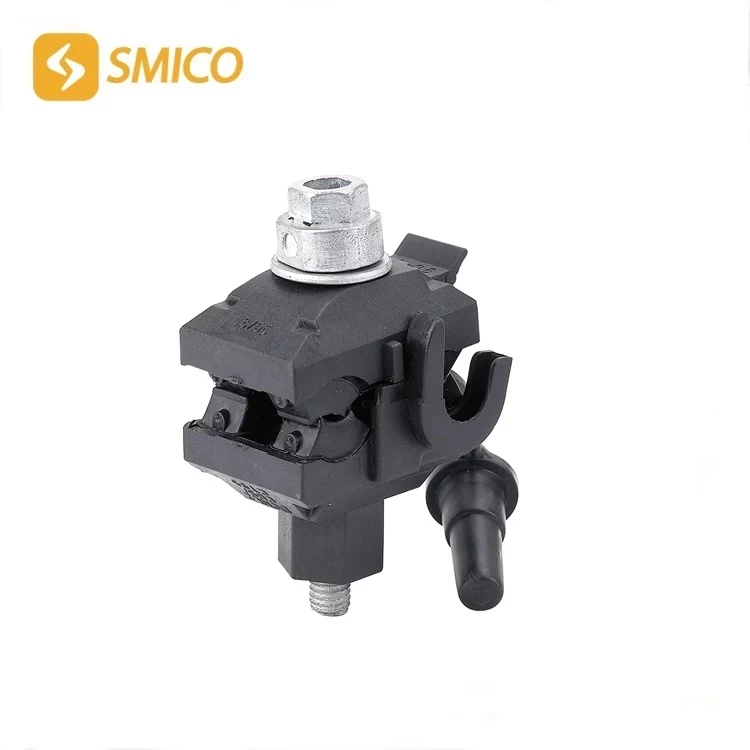Insulation Piercing Connectors For Corrosive Environments: Design Challenges And Solutions
In today's industrial applications, insulation piercing connector faces unprecedented challenges in corrosive environments. According to statistics from NACE International, the global economic losses caused by corrosion are as high as 2.5 trillion US dollars each year, of which piercing connector failures account for about 15%. Benwo Xinpengbo Electronics mainly explains the application design challenges and solutions of ipc connector in corrosive environments!
Typical corrosion environments include:
Marine environment: salt spray concentration can reach 5mg/m3, Cl? ion permeability is strong
Industrial atmosphere: SO? content>0.5ppm, forming an acidic corrosion microenvironment
Chemical environment: extreme pH value (<2 or>12), organic solvent volatilization
High temperature and high humidity: 85℃/85%RH accelerates the electrochemical corrosion process
I. In-depth analysis of corrosion mechanism
1. Electrochemical corrosion
In an environment containing electrolyte, a primary battery is formed between different metals:
Typical potential difference: Cu/Ag is about 0.3V, Al/Cu is up to 0.7V
Corrosion current density can reach 10-100μA/cm2
2. Crevice corrosion
The micro-gap (<0.1mm) formed at the contact interface of the connector leads to:
Oxygen concentration difference battery effect
The local pH value can drop below 2
The corrosion rate is 5-10 times higher than that of the open surface
3. Fretting corrosion
Micron-level relative motion (amplitude 1-100μm) caused by mechanical vibration causes:
Surface oxide film damage
Contact failure caused by wear debris accumulation
Contact resistance can increase by 3 orders of magnitude
II. Key design challenges
1. Material selection dilemma
Cost and performance balance: Gold plating costs 50 times that of tin
Multi-material compatibility: CTE differences lead to thermal cycling stress
Environmental adaptability: A single material is difficult to cope with composite corrosion
2. Structural design challenges
Seal effectiveness: Dynamic seal leakage rate <0.01cc/min after 5000 plug-ins
Contact pressure maintenance: Contact force attenuation <15% after 1000 hours of aging
Drainage and exhaust design: Avoid liquid retention caused by capillary effect
3. Difficulties in process control
Coating uniformity: Deep hole electroplating thickness deviation needs to be controlled within ±10%
Interface treatment: Roughness Ra<0.8μm to ensure reliable sealing
Assembly cleanliness: Particle contamination needs to be <100 particles/cm3 (particle size>5μm)
III. Innovative solutions
1. Material technology breakthroughs
Nano-composite coating:
Au/Ni nano-laminate: Hardness increased to HV300
Self-repairing additives: Repair rate >90% within 24 hours after damage
New matrix materials:
High entropy alloy: Corrosion resistance is 3 times higher than 316 stainless steel
Conductive polymer: Volume resistivity <10-3Ω?cm
2. Structural design innovation
Three-level sealing system:
Main seal: fluororubber O-ring
Secondary seal: silicone gel filling
Anti-creeping: 3D printed maze structure
Contact system optimization:
Hyperbolic contact: contact pressure distribution uniformity>85%
Self-cleaning design: wear debris discharge rate during plugging and unplugging>95%
3. Advances in protection technology
Molecular level protection:
Self-assembled monolayer (SAM) thickness 1-3nm
Contact resistance increase <5%
Intelligent protection system:
Embedded corrosion sensor: resolution 0.1μm
Microcapsule corrosion inhibitor: pH response release
IV. Innovation of verification methods
1. Accelerated test method
Combined environmental test:
Salt spray + SO? + UV alternating cycle
Temperature shock (-55℃~125℃) 100 times
Mechanical-environmental coupling test:
Vibration (20-2000Hz) + salt spray simultaneously
Frequency corrosion test (amplitude 50μm, frequency 30Hz)
2. Advanced characterization technology
In-situ monitoring:
Micro-area electrochemical impedance spectroscopy (resolution 10μm)
Optical coherence tomography (chromatographic accuracy 1μm)
Big data analysis:
Corrosion failure mode AI identification
Life prediction model error <10%
V. Industry application cases
1. Offshore wind power system
Challenges:
Salt spray + high humidity + ultraviolet composite effect
Maintenance cycle requirement ≥5 years
Solution:
Titanium alloy shell + PTFE seal
Triple coating (Ni/Au/Ni) total thickness 5μm
Field data: 8 years of trouble-free operation
2. Chemical process control
Challenges:
Wide range of pH value 0.5-13.5
Corrosion caused by organic solvent vapor
Solutions:
PEEK insulator + FFKM seal
Electroless Ni-P alloy (containing P12%)
Service life increased to 3 times that of conventional products
VI. Future development direction
Intelligent adaptive protection:
Real-time corrosion monitoring based on the Internet of Things
Self-adjusting seal of shape memory alloy
Green protection technology:
Bio-based corrosion inhibitor
Heavy metal-free coating process
Digital twin application:
Multi-physics field coupling simulation
Virtual aging test platform
New protection mechanism:
Super hydrophobic surface (contact angle>150°)
Graphene barrier layer (thickness<10nm)
VII. Conclusion and suggestions
ipc electrical connectors Design in a corrosive environment is a systematic project that requires multidisciplinary collaboration. The following strategies are recommended:
Graded protection concept: configure protection resources according to the corrosion risk level
Full life cycle consideration: initial cost does not exceed 25% of the total cost
Innovative verification system: establish a correlation model between actual environment and accelerated test
Supply chain collaboration: in-depth cooperation between material suppliers and connector manufacturers
Through the comprehensive application of material innovation, structural optimization and intelligent protection technology, modern cable piercing connector has been able to maintain reliable operation in the most severe corrosive environment. With the development of new technologies, the environmental adaptability of connectors will continue to break through, providing more robust connection guarantees for electronic systems in various industries.

